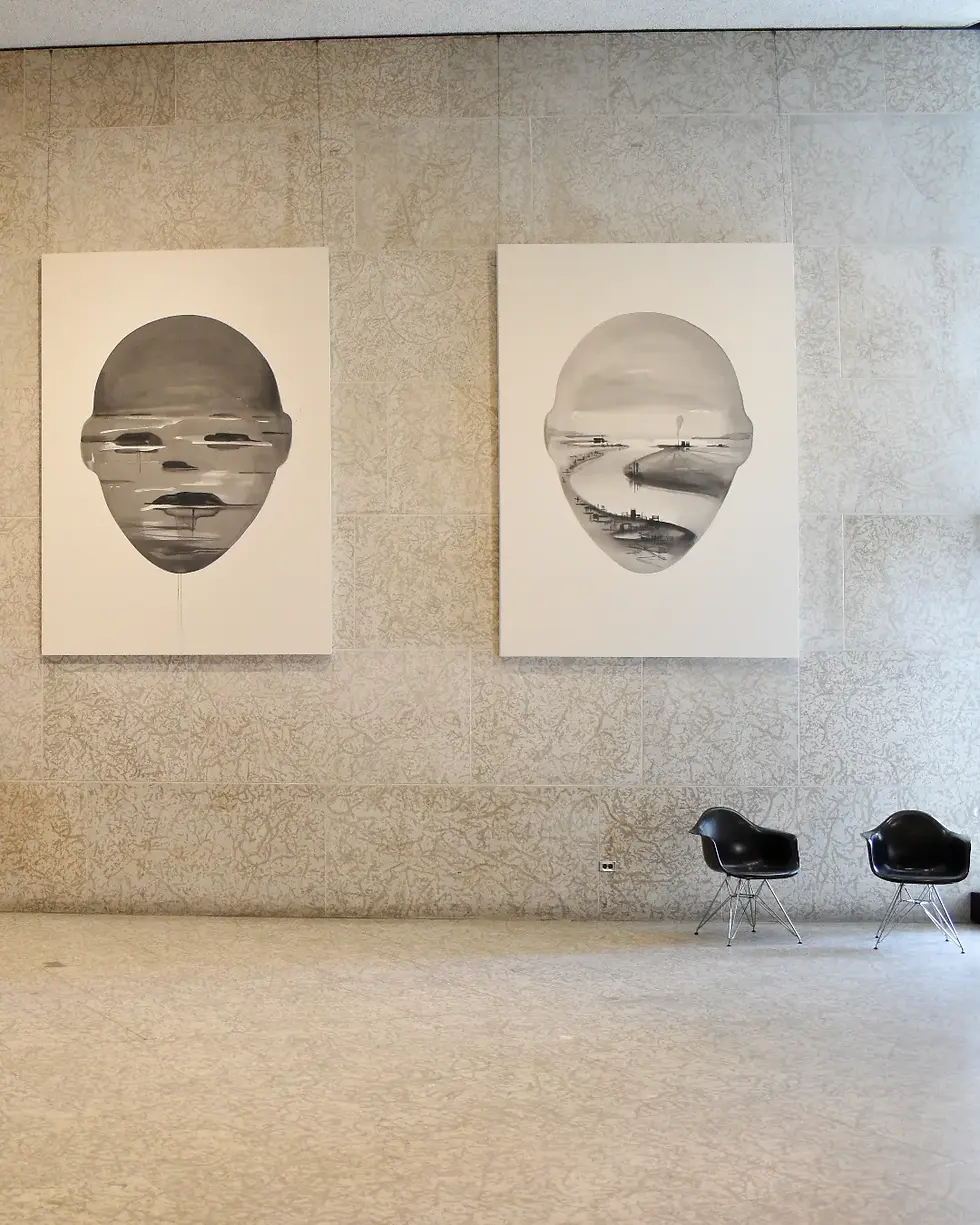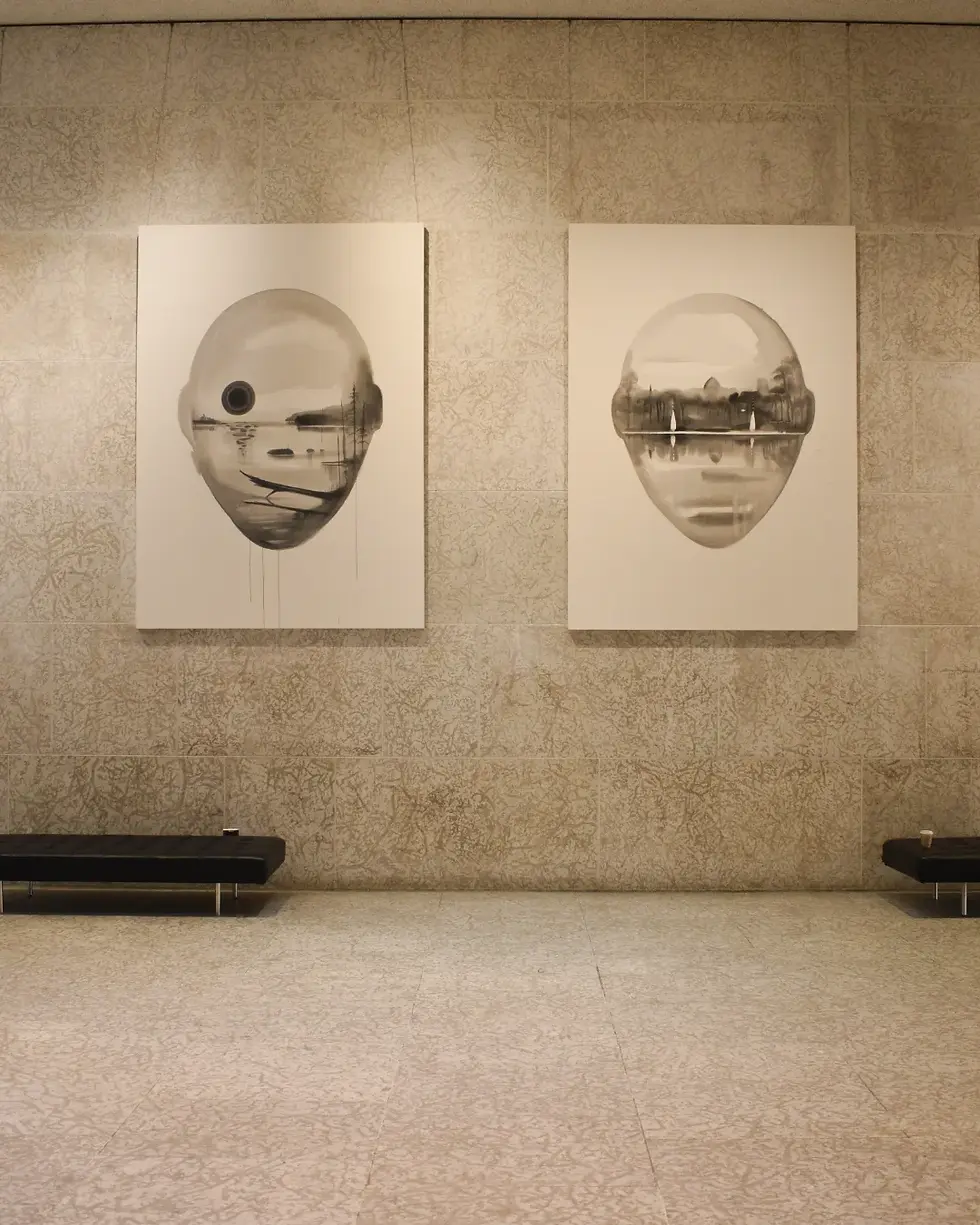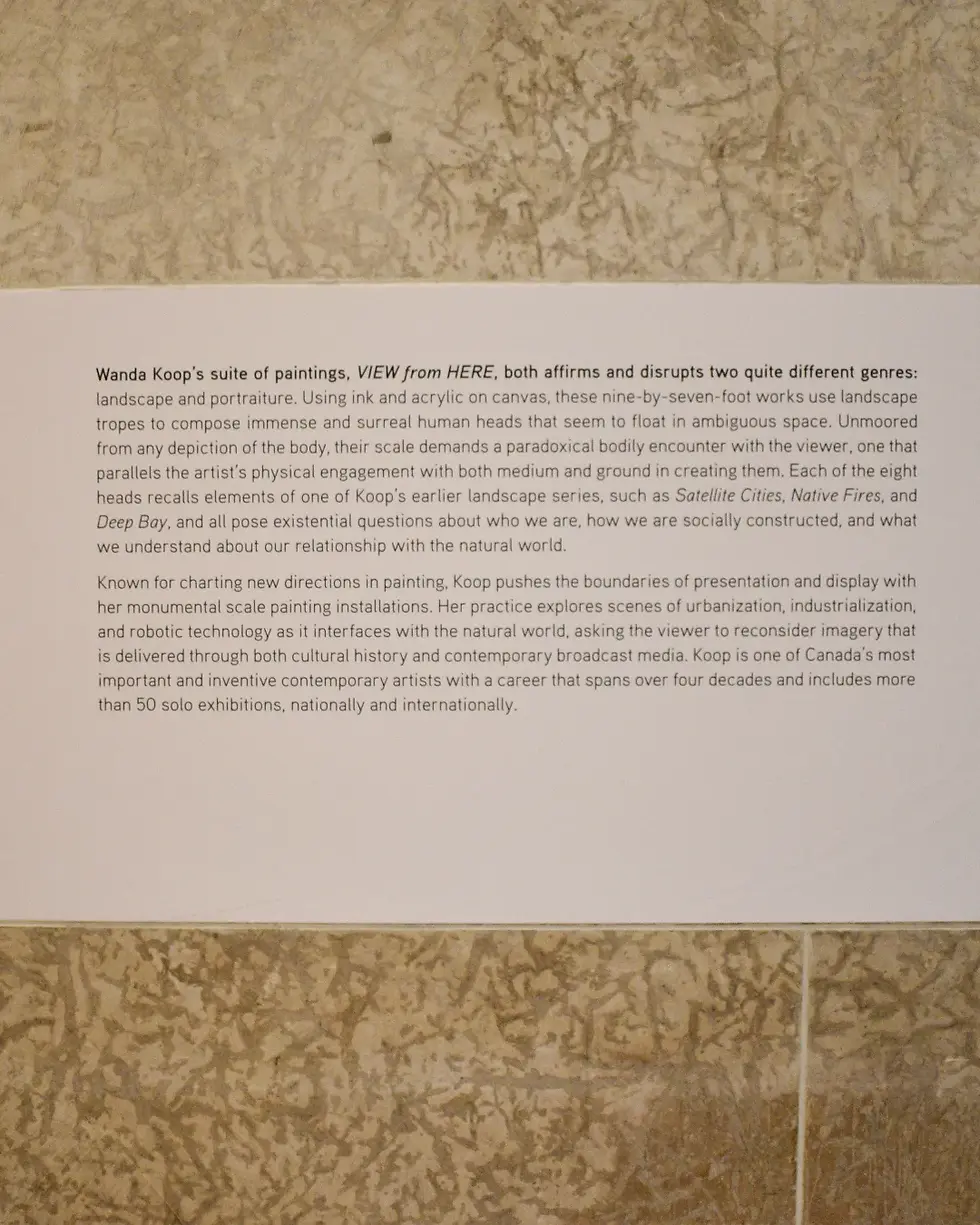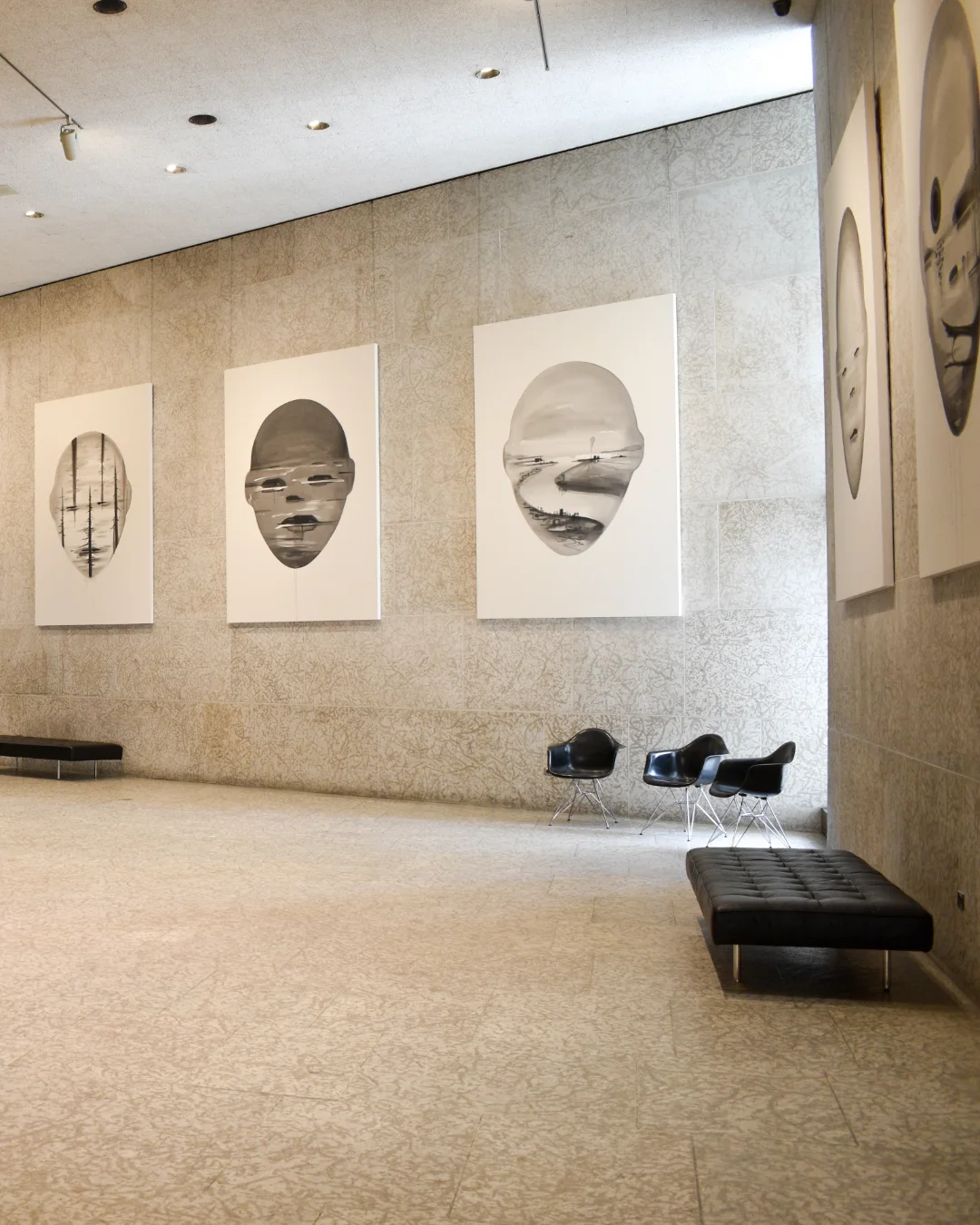Encapsulated Landscapes: Wanda Koop’s Bleak Lens on the Environment
- Gloria I. N.

- Mar 2
- 3 min read
Updated: Sep 16
Wanda Koop’s latest exhibition at the Winnipeg Art Gallery stops you in your tracks. The scale is commanding. The mood is unsettling. And the message? Impossible to ignore.
I found myself returning to her towering canvases multiple times, fixated on the same tension: the collision between nature and machine. It wasn’t just the paintings’ visual impact, but the unsettling questions they raised.
The robot-like heads, stark and expressionless, fill the space. But it’s what’s inside them that tells the real story: grim, natural landscapes sealed behind a grey filter.
Koop uses these massive heads not as characters, but as lenses. Through their hollow faces, we see rivers, cities, and islands stripped of color, life, or warmth. The land is grey, the water heavy, the air seems thick with silence.
View exhibition: WAG Exhibition Wanda Koop
My Views on the Exhibition:
Perspective: A Robotic Gaze on Nature

Robot-like heads as lenses make you look at the nature scenes as if you were a robot. There’s something deeply dystopian about it. The heads feel cold. They feel indifferent. And yet they dominate the space, towering over you, as if reminding you: this is the perspective we’ve adopted.
Inside the heads are landscapes, cities choked with grey, rivers stripped of vibrancy, and lakes and islands that feel eerily still. The landscapes draw attention to an environmental and natural world rather than a social or interpersonal world.
All this is being observed from a distance. As the viewer, you feel a distance from the landscapes. You feel separate. It's like you're looking at a screen through a head-shaped lens.
The robot becomes a symbol for how we now view the world: filtered, distanced, digitized.
What if our view of nature is now entirely mediated by machines?
Nature vs. Machine: Where Are the People?

Koop’s robot-like heads serve not just as observers, but as vessels, framing the natural world within cold, lifeless borders.
The distinction is deliberate. Each robot head becomes both ''observer'' and ''container," emphasizing a deepening imbalance with technology as powerful, and nature as overpowered and contained.
There's a striking absence of human figures, which shifts the focus from the personal to the planetary.
The exhibition sidesteps the interpersonal to focus on a wider, more desolate lens, one that isolates nature, contains it, and observes it coldly. These are not vibrant ecosystems teeming with life. They’re drained, industrialized, dying.
Technology: Awe and Alarm

Koop’s use of robots as framing devices feels intentional in its duality: We idealize technology for its efficiency and promise. We’re fascinated by it, even comforted by it, yet we fear its consequences.
Here, technology looms too large. It’s not just framing nature, it’s replacing our direct connection to it.
Wanda Koop isn’t just showing us futuristic scenes; she’s foreshadowing. Her message is firm: technology is transforming how we interface with the environment. It’s a call to awareness.
A floating metropolis surrounded by water beneath heavy, toxic clouds that drip a dark, unnatural substance. It’s a powerful message on industrial overreach, climate change, and problematic environmental consequences.
A Warning Through Art
These paintings feel less like predictions and more like warnings. Less like science fiction, and more like emotional truth. A reminder that if we keep viewing the planet through machines, through screens, through filters, we might stop truly seeing it at all.
Topics explored: Robotics, Technology, Industry, The environment, Water, Flooding, Climate Change










Comments